There are many limitations and challenges that companies encounter when deploying SharePoint. These limitations can impact the overall employee experience, hinder communication strategies, and lead to decreased productivity.
From poor personalization of the employee experience to limited mobile functionality, SharePoint’s disadvantages can pose significant hurdles for organizations aiming to create a seamless and effective digital workplace.
In this article, we’ll explore the limitations of SharePoint and reveal why your organization is better off with a modern intranet platform. For more information, read our in-depth analysis of how MangoApps addresses these issues.
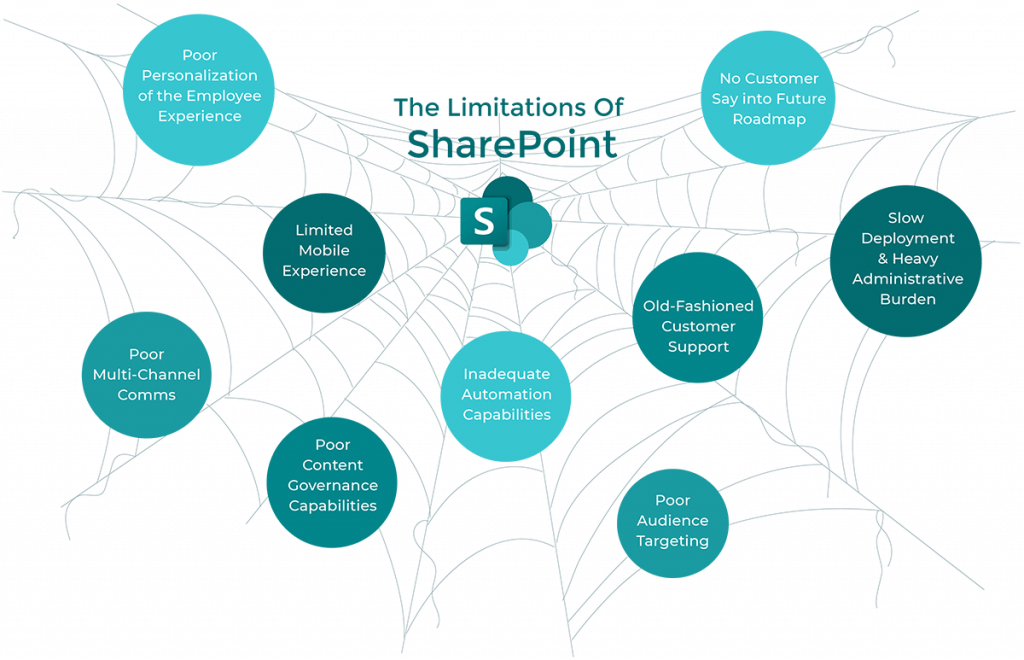
9 Limitations Of SharePoint
#1 – Poor Personalization of the Employee Experience
SharePoint lacks the ability to provide a personalized employee experience. Typically, the platform operates as a ‘catch-all data dump.’ As a result, employees have to sift through irrelevant information to find what they actually need.
A modern intranet should personalize your employees’ content experience based on criteria like job function or location. Without this capability, you’re forcing everyone to waste time cutting through the noise to find relevant materials.
As an example, an employee in Washington doesn’t care that they’re offering free flu shots in India. With SharePoint, every employee will see this update with equal prioritization.
Personalized employee experience is a key value proposition of a modern intranet compared to email or other platforms. SharePoint does not provide the tools to create a curated information experience. Thus, it is not well-equipped to capture and hold the user’s attention.
Think about how your employees are currently consuming information. Is everything they see relevant to their office, job, or department? Or is there information being sent out that only affects one part of your organization’s workforce? These are things you need to consider to provide a personalized employee experience.
#2 – Limited Mobile Experience
Another limitation of SharePoint is that it offers a poor mobile experience. Many organizations that implement SharePoint typically don’t have a frontline workforce. The ones that do are completely neglecting a large portion of their workforce, contributing to feelings of disengagement and confusion.
Frictionless intranet access on a mobile device is essential for frontline employees. The mobile experience should include self-service access to key information, real-time messaging, pulse surveys, and targeted news feeds with relevant and actionable information.

SharePoint’s mobile experience is only about being responsive to screen sizes. It does not provide the kind of native mobile-first experience that modern employees expect their employers to deliver.
With SharePoint, you are failing to equip your frontline employees with the proper tools they need to do their jobs. Enabling frontline employees with a seamless mobile experience is critical. This is why we recommend companies with a mixed workforce to consider how the platform will impact all of its employees.
#3 – Poor Multi-Channel Communication
SharePoint treats all employees as if they have the same communication needs, resulting in noise and low engagement.
A modern intranet should give you the power to reach employees via channels like SMS messages, email, mobile push notifications, and in-office displays, with flexible notification settings. This way, employees can be reached in the manner that suits each individual best.
With SharePoint, there is no way to individualize these settings. As a result, it is difficult or impossible to implement a sophisticated communication strategy. The reality is that each of your employees prefers to consume information in different ways. Your organization needs to make sure that the information is accessible through whichever avenue they need, whether it’s mobile, email, push notifications, etc.
#4 – Poor Content Governance Capabilities
Another problem with SharePoint is that it lacks sufficient content governance capabilities. Initially built as a Content Management System, SharePoint primarily functions as a data dump for all of your organization’s information.
Unfortunately, with SharePoint, there is very little in the way of content governance capabilities. It is almost guaranteed that your intranet will turn into a dumping ground of outdated content eventually. The only way to avoid this is to manually monitor the content and take action to keep it updated. This is no easy undertaking and requires consistent effort over a long period of time with no lapses.
If an employee wants to find a specific document on SharePoint, they’ll likely have to comb through hundreds of irrelevant files and outdated versions of resources to locate it due to issues with SharePoint’s search functionality.
This is time-consuming and can significantly hinder employee productivity.
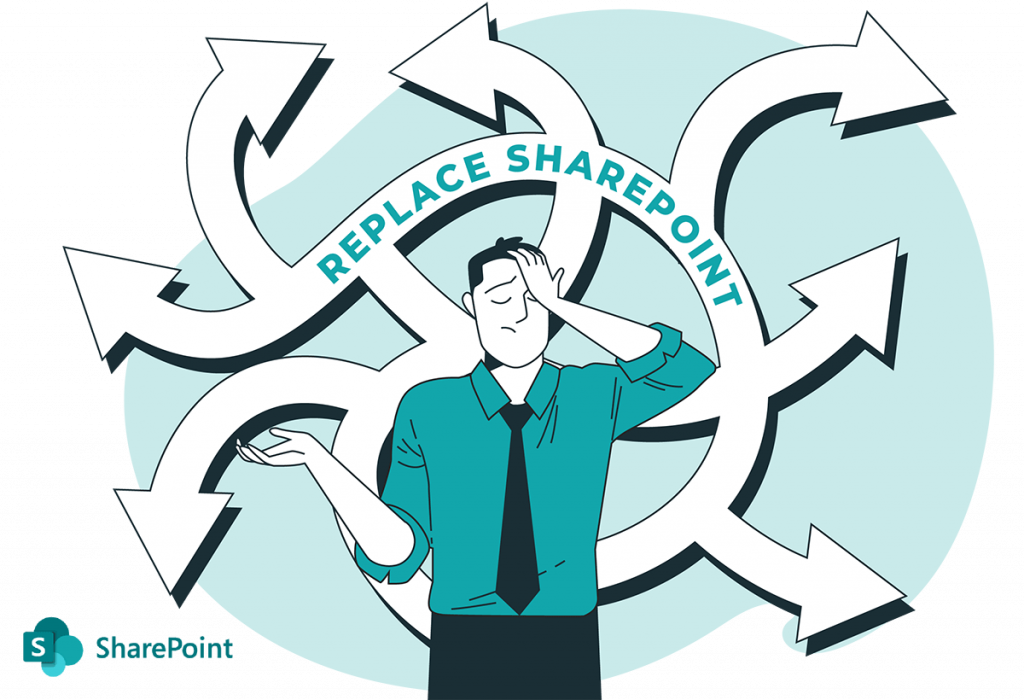
With a modern intranet provider like MangoApps, you can equip your workforce with a content governance engine. Our platform intelligently auto-archives stale intranet content and delivers notifications to content administrators when their intranet content needs a refresh.
#5 – Inadequate Automation Capabilities
It is crucial to be able to engage with your employees just like your marketing team engages with your customers. This requires some automation capabilities, like being able to plan, schedule, and automate messaging campaigns that go out to your employees when they hit key milestones in the employee journey.
SharePoint does not make it easy to do this without custom development. The accrued cost from building out these automations can be quite high. You’re also going to have to dedicate a large portion of your IT team’s time to maintaining and administering it.
With a modern provider, you can have this functionality built seamlessly into the communication deployment workflow.
#6 – Poor Audience Targeting
SharePoint largely enables communication using an organizational structure that is based on locations, departments and teams. This is an important component of communication strategy, but it doesn’t always reflect the day-to-day reality of how companies operate.
It is crucial to be able to define employee personas based on multiple criteria. This ensures that you capture some of the other, more dynamic categories at play in your organization. With the deeper targeting functionality that modern providers like MangoApps offer, you can use employee profiles to deliver relevant content to your team in context via the channels they prefer.
This will allow you to achieve the highest engagement and adoption. Your employees will no longer miss messages that would’ve been important to them or waste time on irrelevant content.
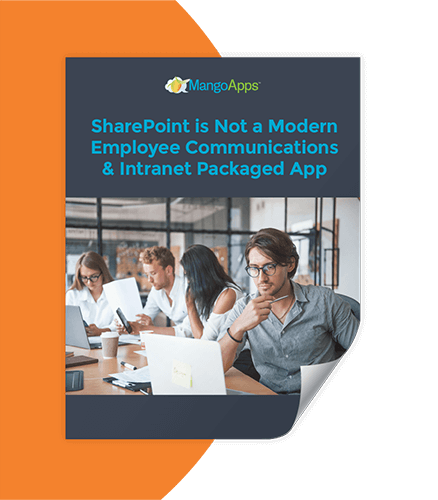
Learn more about the limitations of SharePoint
View this whitepaper to learn more about the limitations of SharePoint, and how a modern intranet platform might be a better fit for your organization’s needs.
#7 – Slow Deployment & Heavy Administrative Burden
Deploying SharePoint is a heavy undertaking that is rife with hidden costs. To get the most out of it, you have to bring on consultants and/or full-time specialists. Rolling it out to your team can take a long, long time. This can make it very hard to keep up with the changing demands of the workforce, especially when you have a custom build that can’t easily be updated.
Let’s say you spend the next year working with an expensive consultant to build the perfect SharePoint setup. You roll it out and invest time in training your employees to use the platform effectively. You eat the cost of hiring a small team of SharePoint experts to handle all the upkeep the platform requires.
Now, fast forward a few years. A new version of SharePoint has come out, because the old one no longer met the modern workforce’s needs. This puts you in an uncomfortable position. You can stick with your old setup, which will eventually become so obsolete that your employees stop using it (if they haven’t already by this point). Otherwise, you’ll have to go through the entire exercise again with the new version and a new consultant.
This is a common lifecycle we see for our customers that have switched over from SharePoint to MangoApps. If this seems familiar to you, think about upgrading to a modern platform that requires less from your IT team.
#8 – Old-Fashioned Customer Support
All of the above issues with consultants and custom development dance around the problem at the root of SharePoint implementations: the lack of customer support. Microsoft’s customer support is practically nonexistent. This is not a secret; it’s why SharePoint consultants are able to charge as much as they do.
If you have any issues that your consultants or internal team can’t resolve, you’re likely out of luck. Microsoft is simply too large of a company to be able to address all of its customers’ needs adequately. In fact, when a typical customer cancels their contract, Microsoft hardly feels it.
#9 – No Customer Say into Future Roadmap
As a SharePoint customer, you get a half-finished product and have to put the pieces together yourself. On top of that, as an enterprise you have little or no voice to address the limitations of SharePoint. Their customer base is so large that their roadmap is driven by large-scale market forces that move slowly. Their priorities may or may not be in line with your specific needs.
By contrast, providers like MangoApps work closely with customers.
We are in conversation with our customers every single day. Thus, our roadmap is dictated by their needs, ideas, and requests.
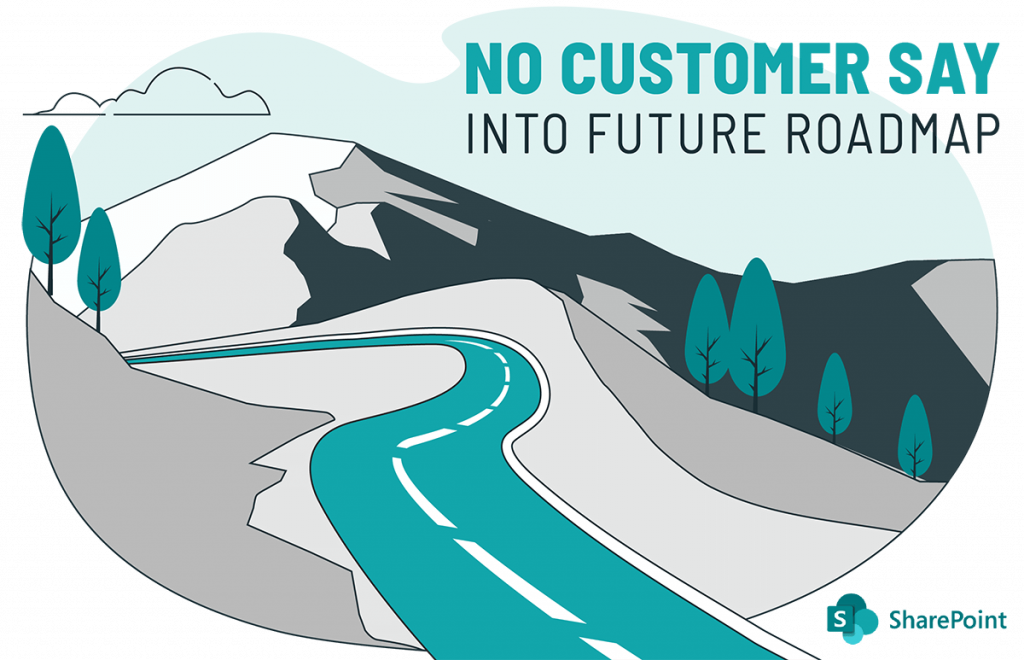
Get Started Today – Refresh Your Content With MangoApps
MangoApps is the ultimate SharePoint replacement for organizations with a frontline workforce.
With MangoApps, you’re able to give 100% of your workforce all the tools they need in one employee app to increase productivity, improve retention, and boost employee engagement.
MangoApps is customizable and offers a wide range of unique functionalities aimed at solving any business need.
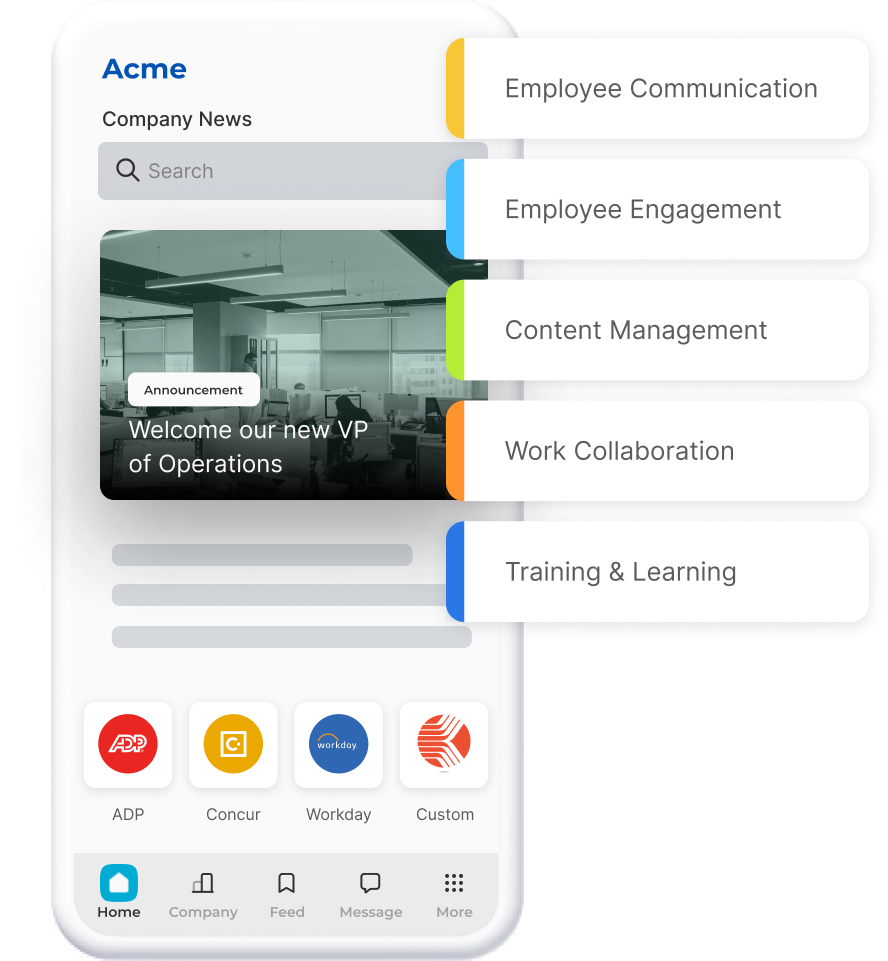
Rather than spend a ton of expenses and IT resources maintaining an insufficient SharePoint intranet, just opt for MangoApps!








